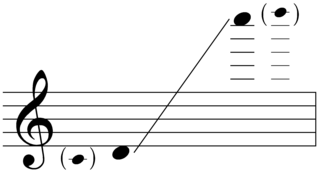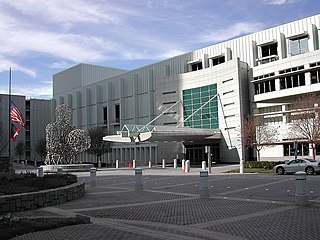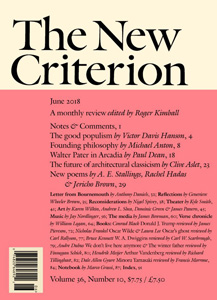Jean-Yves Thibaudet is a French pianist.
Jukka Tiensuu is a Finnish contemporary classical composer, harpsichordist, pianist and conductor.
Piano Concerto "The Fire" is the first piano concerto by the Chinese composer Tan Dun. It was commissioned by the New York Philharmonic under the direction of Lorin Maazel. Its premiere was given on 9 April 2008, by the Chinese pianist Lang Lang and the New York Philharmonic Orchestra conducted by Leonard Slatkin in Avery Fisher Hall, New York City. It has an approximate duration of 30 minutes. and is written in three movements:
- Lento
- Adagio melancholia
- Allegretto

Keqrops is a composition for piano and orchestra by Greek/French composer Iannis Xenakis. Due to the prominent role of the piano soloist, it has often been classified as a piano concerto. It was completed in 1986.
The Piano Concerto is a concerto for solo piano and orchestra in three movements by the Finnish composer Esa-Pekka Salonen. The work was jointly commissioned by the New York Philharmonic, the BBC, the NDR Symphony Orchestra, and Radio France. It was premiered February 1, 2007 in Avery Fisher Hall, New York City, with Salonen conducting the pianist Yefim Bronfman and the New York Philharmonic. Salonen dedicated the piece to Yefim Bronfman.
The Percussion Concerto No. 2 is a concerto for solo percussion and orchestra by the Scottish composer James MacMillan. The work was jointly commissioned by the Netherlands Radio Philharmonic, the Philharmonia Orchestra, the Orchestre national du Capitole de Toulouse, the Cabrillo Festival of Contemporary Music, the Baltimore Symphony Orchestra, and the São Paulo State Symphony. It was first performed on November 7, 2014 at TivoliVredenburg in Utrecht, the Netherlands, by percussionist Colin Currie and the Netherlands Radio Philharmonic under conductor James Gaffigan. The composition is MacMillan's second percussion concerto after 1992's Veni, Veni, Emmanuel.
The Oboe Concerto is a composition for solo oboe and orchestra by the Scottish composer James MacMillan. The work was commissioned by the Britten Sinfonia and was first performed at the Birmingham Town Hall on 15 October 2010 by the oboist Nicholas Daniel and the Britten Sinfonia under MacMillan. The piece is dedicated to Nicholas Daniel and the Britten Sinfonia.
The Violin Concerto is a composition for solo violin and orchestra by the Scottish composer James MacMillan. The piece was first performed at the Barbican Centre on May 12, 2010 by the violinist Vadim Repin and the London Symphony Orchestra under the conductor Valery Gergiev. The work is dedicated to Vadim Repin and in memoriam of the composer's mother, Ellen MacMillan.
The Cello Concerto is a composition for solo cello and orchestra by the Scottish composer James MacMillan. It is the second of three interrelated compositions in MacMillan's Easter triptych Triduum commissioned by the London Symphony Orchestra. The piece was first performed at the Barbican Centre on October 3, 1996 by the cellist Mstislav Rostropovich and the London Symphony Orchestra under the conductor Colin Davis. The work is dedicated to Mstislav Rostropovich.
The Symphony No. 1 or Symphony: 'Vigil' is an orchestral symphony by the Scottish composer James MacMillan. It is the last of three interrelated compositions in MacMillan's Easter triptych Triduum commissioned by the London Symphony Orchestra. The piece was first performed at the Barbican Centre on 28 September 1997 by the London Symphony Orchestra under the conductor Mstislav Rostropovich.
The Piano Concerto No. 2 is a composition for solo piano and string orchestra by the Scottish composer James MacMillan. The work was commissioned by the New York City Ballet and was first performed at Lincoln Center for the Performing Arts on May 8, 2004, by the pianist Cameron Grant and the New York City Ballet Orchestra under MacMillan. The original ballet performance was choreographed by Christopher Wheeldon. The piece is dedicated in memory of the poet Edwin Muir.
The Berserking is a concerto for solo piano and orchestra by the Scottish composer James MacMillan. The work was commissioned by the Musica Nova Festival and was premiered in Glasgow on 22 September 1990 by the pianist Peter Donohoe and the Royal Scottish National Orchestra under the conductor Matthias Bamert.
The Concerto for Clarinet is a composition for solo clarinet and orchestra by the American composer Joan Tower. The work was commissioned by the Walter W. Naumburg Foundation for the clarinetist Charles Neidich, to whom the piece is dedicated.
The Concerto for Piano is a composition for solo piano and orchestra by the American composer Elliott Carter. The work was commissioned by the pianist Jacob Lateiner with support from the Ford Foundation. It was composed between 1964 and 1965 and was first performed at Symphony Hall, Boston on January 6, 1967, by Lateiner and the Boston Symphony Orchestra under the conductor Erich Leinsdorf. The piece was dedicated to the composer Igor Stravinsky for his 85th birthday.
The Clarinet Concerto is a composition for solo clarinet and orchestra by the Finnish composer Magnus Lindberg. It was written for the Finnish clarinetist Kari Kriikku. The piece was given its world premiere in Finlandia Hall, Helsinki, on September 14, 2002 by Kari Kriikku and the Finnish Radio Symphony Orchestra under the direction of Jukka-Pekka Saraste. The composition is one of Lindberg's most frequently performed works.
The Piano Concerto No. 3 is a composition for solo piano and orchestra by the American composer Peter Lieberson. The work was commissioned by the Minnesota Orchestra for the ensemble's centennial. It was given its world premiere by the pianist Peter Serkin and the Minnesota Orchestra in Minneapolis on November 26, 2003. The piece is dedicated to Peter Serkin and was a finalist for the 2004 Pulitzer Prize for Music.
The World's Ransoming is a concerto for cor anglais and orchestra by the Scottish composer James MacMillan. It was the first of three interrelated compositions in MacMillan's Easter triptych Triduum commissioned by the London Symphony Orchestra. Its world premiere was given by the soloist Christine Pendrill and the London Symphony Orchestra under the direction of Kent Nagano at the Barbican Centre on 11 July 1996.
The Concerto for Piano and Orchestra is a composition for solo piano and orchestra by the Polish composer Witold Lutosławski. The music was commissioned by the Salzburg Festival. It was first performed at the festival on August 19, 1988 by the pianist Krystian Zimerman and the Austrian Radio Orchestra under the direction of the composer. Lutosławski dedicated the piece to Zimerman.
A Scotch Bestiary: Enigmatic Variations on a Zoological Carnival at a Caledonian Exhibition is an organ concerto by the Scottish composer James MacMillan. The work was commissioned by the BBC and the Los Angeles Philharmonic. It was composed from 2003 to 2004 and was first performed by the organist Wayne Marshall and the Los Angeles Philharmonic under the direction of Esa-Pekka Salonen at the Walt Disney Concert Hall on October 7, 2004. Paul Jacobs (organist) gave the American East Coast premiere of this work in January 2018 in Philadelphia's Kimmel Center for the Performing Arts with the Philadelphia Orchestra and conductor Yannick Nézet-Séguin.
The Piano Concerto is a composition for piano and orchestra by the Austrian composer Heinz Karl Gruber. The work was commissioned for the pianist Emanuel Ax by the New York Philharmonic, the Royal Stockholm Philharmonic Orchestra, the Berlin Philharmonic, and the Tonhalle Orchester Zürich. It was composed from 2014 through 2016 and was given its world premiere by Emanuel Ax and the New York Philharmonic under the direction of Alan Gilbert at David Geffen Hall on January 5, 2017.








